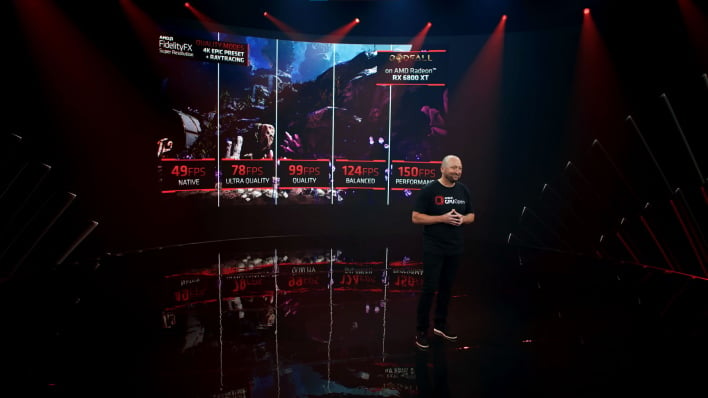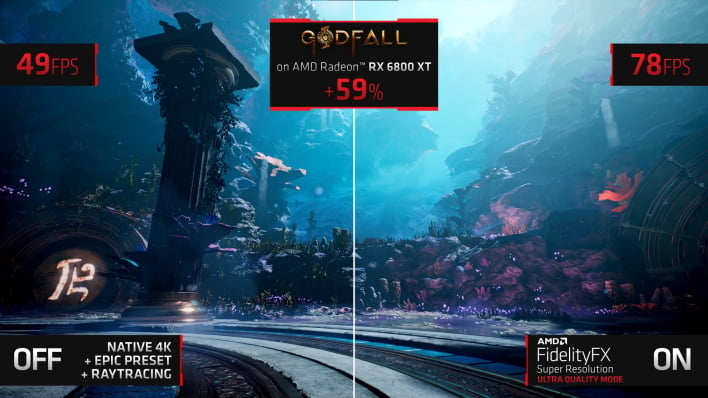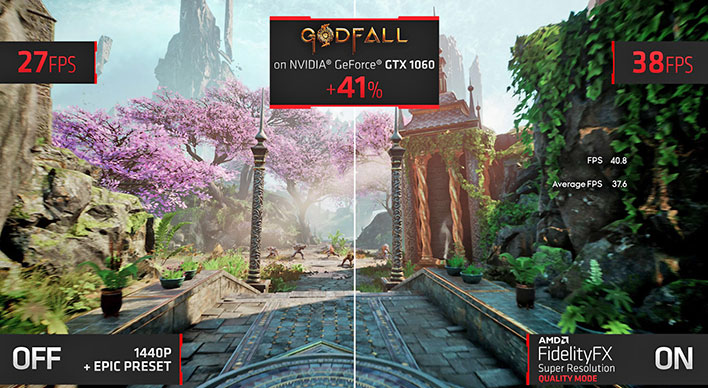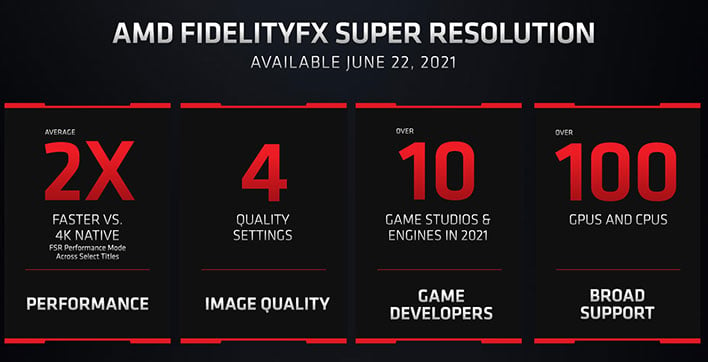A Closer Look At AMD’s FidelityFX Super Resolution Open Source Answer To DLSS

Over the weekend, AMD made several big announcements at Computex 2021, including information about upcoming Ryzen 5000G Zen 3 APUs and new Radeon RX 6000M mobile GPUs for AMD Advantage gaming laptops. The company also announced its impressive answer to NVIDIA's Deep Learning Super Sampling (DLSS) technology. AMD's FidelityFX Super Resolution is a new, open-source technology for upscaling game content from lower resolutions, to produce higher resolution frames, with similar fidelity to the higher native resolution. And because a lower resolution input is being rendered by the GPU, FSR can also improve frame rate performance dramatically.
What is FidelityFX Super Resolution (FSR)?
FidelityFX Super Resolution, or FSR for short, is a “spatial upscaling technique” that is used to create a "super resolution” image from game engine input frames. To accomplish this, FSR uses a library of “cutting-edge algorithms with a particular emphasis on creating high-quality edges” to improve performance compared to natively rendering frames. In contrast to NVIDIA DLSS 2.0, AMD explains that FSR does not rely on history buffers, motion vectors, or require training on a per-game basis. AMD's Scott Herkelman stepped through the technology at yesterday's Computex keynote.
In addition, as we mentioned, FSR is open-source under AMD's GPUOpen license, which is a plus in more ways than one. First and most importantly, being open-source should make FSR easy to implement in game engines for us with not only AMD GPUs and APUs, but also GPUs from its competitors. AMD claims that FSR is highly optimized for a wide range of GPUs; however, the company will not provide technical or warranty support for this third-party hardware. Be that as it may, having an open ecosystem should be better than NVIDIA’s proprietary DLSS technology that only runs on NVIDIA hardware. This theoretically should make the technology more appealing to game devs as well, due to its intrinsically larger install base of hardware that it can run on. Regardless, without further ado, let us look at what FSR can do for games in the future…
FSR Image Quality And Performance For AMD GPUs, Or Any GPU
AMD used Godfall as its FSR example, and it was pretty impressive. Godfall is an action-RPG that released in November of 2020 for both PC and PS5. The game takes players “across exotic vistas, from the above-ground reefs of the Water Realm to the subterranean crimson forests of the Earth Realm,” all of which look gorgeous in the screenshots. It is the sort of game one would want to enjoy in as high of a resolution as possible with all graphical goodies enabled. However, that would typically result in a significant performance hit.
AMD finally has come out swinging with its much-anticipated FidelityFX Super Resolution, and no doubt NVIDIA will be positioning with DLSS moving forward as a result. In any event, having an open-source and easy-to-implement solution for turning low-resolution game engine input into high-resolution frames sounds like a recipe for success, and we cannot wait to try it out for ourselves. Let us know what you think of AMD’s FidelityFX Super Resolution announcement in the comments below.





